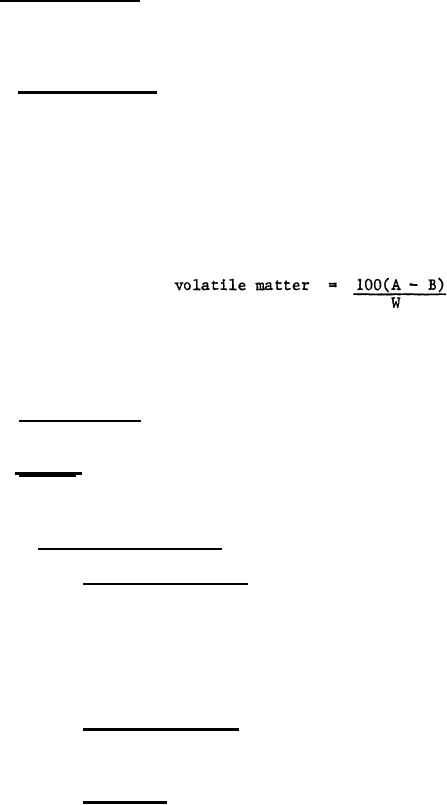 |
|||
|
|
|||
| ||||||||||
|
|  MIL-R-51446(EA)
4.2.3 Tests (see 6.7). Water in accordance with ASTM D1193 and reagent
grade chemicals shall be used throughout the tests. Where applicable, blank
determinations shall be run and corrections applied where significant. Tests
shall be conducted as follows:
4.2.3.1 Volatile matter. Weigh to the nearest milligram (mg) approximately
5 g of specimen into a glass-stoppered weighing bottle approximately 5 centi-
meters (cm) in diameter. Weigh the bottle and contents to the nearest
milligram, remove the stopper, and place the stopper and uncovered weighing
bottle in a vacuum desiccator over freshly activated silica gel. Close the
desiccator, evacuate the air, and maintain the vacuum (10 millimeters of
mercury or less) for 24 hours. Release the vacuum slowly, passing the incoming
air through a suitable drying train. Stopper the bottle and reweigh. Retain
the dried specimen for use in 4.2.3.2. Calculate the percent by weight vola-
tile matter as follows:
A = Weight in grams of stoppered bottle and contents before drying,
where:
B = Weight in grams of stoppered bottle and contents after drying, and
W = Weight in grams of specimen.
4.2.3.2 Melting range. Determine the melting range of the dried material
retained from 4.2.3.1 in accordance with ASTM E324.
4.2.3.3 Purity. Determine the purity of the specimen by the ultraviolet
(UV) spectrophotometer method specified in 4.2.3.3.1 or by the gas-liquid
chromatography method specified in 4.2.3.3.2.
4.2.3.3.1 UV spectrophotometer.
(a) Standard solutions. Weigh to the nearest 0.1 mg
approximately 0.2 g of recrystallized CR (see 6.5) having a melting range of
71 to 74C when tested as specified in 4.2.3.2. Quantitatively transfer the
CR to a 1-liter volumetric flask. Dissolve the CR and dilute to the volume
mark with 1N hydrochloric acid. Pipet aliquots of 2, 4, 6, 8, and 10 milli-
liters (ml) of the solution into separate 100-ml volumetric flasks. Dilute
each aliquot to the volume mark with 1N hydrochloric acid and mix thoroughly.
(b) Specimen solution. Prepare a specimen solution by substi-
tuting the specimen (as received and without drying) for the recrystallized CR
in procedure (a).
(c) Procedure. Using a UV spectrophotometer suitable for
measuring absorbance at 315 nanometers, cells of 1 cm path length, and 1N
hydrochloric acid in the reference beam, measure the absorbance of the standard
solutions and the specimen solution at the peak occurring between 315 and 320
4
|
|
Privacy Statement - Press Release - Copyright Information. - Contact Us |